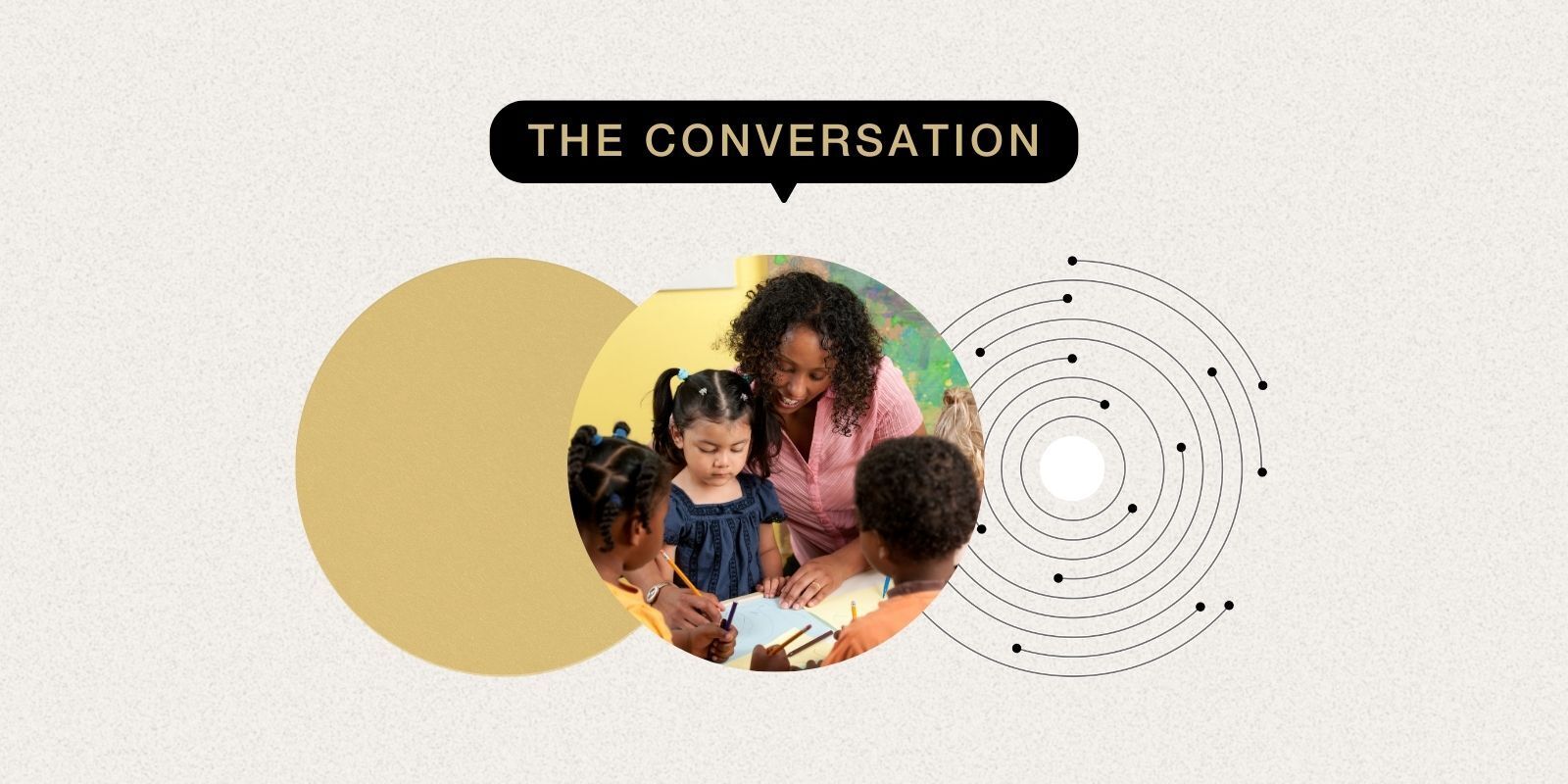While most WCCUSD students don’t meet state standards, a number of schools saw improvements – Richmondside

Report on California’s Educational Progress in Relation to Sustainable Development Goals
Executive Summary
An analysis of recent California standardized test scores indicates a slow recovery from pandemic-related learning disruptions, highlighting significant challenges to achieving Sustainable Development Goal 4 (Quality Education). While modest year-over-year gains are noted, persistent and severe disparities among student demographic groups underscore the urgent need to address SDG 10 (Reduced Inequalities) and SDG 5 (Gender Equality) within the state’s education system. This report details statewide and district-level performance, focusing on the equity gaps that impede progress towards inclusive and quality education for all learners.
Analysis of Educational Attainment and SDG 4 (Quality Education)
Five years post-pandemic, California’s education system shows incremental progress, but overall proficiency levels remain below pre-pandemic benchmarks, indicating a substantial gap in achieving the targets of SDG 4, which aims to ensure inclusive and equitable quality education and promote lifelong learning opportunities for all.
Statewide Performance Metrics (2024-25 School Year)
- English Language Arts (ELA): Proficiency increased by 1.8 percentage points to 48.8%. This remains below the pre-pandemic level of 51.7%.
- Mathematics: Proficiency increased by 1.8 percentage points to 37.3%. This is still below the pre-pandemic level of 39.7%.
- Science: Proficiency increased by 2 percentage points to 32.7%, surpassing pre-pandemic levels.
Case Study: West Contra Costa Unified School District (WCCUSD)
The WCCUSD serves as a microcosm of the statewide challenge, with performance metrics lagging behind state averages and demonstrating the localized difficulties in achieving SDG 4 targets.
- ELA Performance: 33.39% of students met or exceeded state standards, an increase of only 0.86% from the previous year.
- Mathematics Performance: 25.92% of students met or exceeded state standards, showing a more significant increase of 2.58%, attributed to a new curriculum.
- Institutional Perspective: Katherine Acosta-Verprauskus, WCCUSD Associate Superintendent, stated, “We still have a long ways to go… the overall trend has maintained status quo and has not returned to the pre-pandemic levels.”
Despite overall low performance, some schools demonstrated notable progress, such as Richmond High School (12.7% increase in ELA) and Pinole Valley High (18.5% increase in math), suggesting that targeted strategies can yield positive results.
Challenges to SDG 10 (Reduced Inequalities) in Education
The data reveals profound disparities across racial, ethnic, and socioeconomic lines, directly contravening the core principle of SDG 10 to reduce inequality within and among countries. The slow pace of closing these achievement gaps is a primary concern for educational equity.
Racial and Ethnic Disparities
A significant performance gap persists between student demographic groups, both statewide and within WCCUSD.
- Statewide Black Students: 32.8% met or exceeded ELA standards; 20.1% met or exceeded math standards.
- WCCUSD Black Students: 21% met or exceeded ELA standards; 13% met or exceeded math standards.
- Statewide Latino Students: 38.8% met or exceeded ELA standards; 25.7% met or exceeded math standards.
- WCCUSD Latino Students: 22% met or exceeded ELA standards; 15% met or exceeded math standards.
- Comparison Group (Statewide): Asian students (74.36% ELA, 70.3% math) and White students (61.8% ELA, 51% math) significantly outperform their Black and Latino peers, highlighting a systemic failure to provide equitable educational outcomes.
Education advocates argue that incremental gains are insufficient. Christopher Nellum of EdTrust-West stated, “we need double-digit gains, not incremental gains,” to seriously address these inequities.
Socioeconomically Disadvantaged Students
Students from low-income backgrounds face substantial barriers to achieving quality education, a key focus of SDG 4 and SDG 10.
- Statewide Performance: Approximately 38% of socioeconomically disadvantaged students met ELA standards, and 26% met math standards.
- WCCUSD Performance: Performance is drastically lower, with only 11% meeting ELA standards and 4% meeting math standards.
English Language Learners (ELL)
Progress for English Learners is mixed, impacting their access to quality education as outlined in SDG 4.5.
- Statewide: The percentage of ELL students achieving “well developed” English proficiency rose slightly to 15.5%.
- WCCUSD: The number of ELL students classified as “well developed” fell by 3.6% to just 7.5%.
- Strategic Interventions: The district is focusing on professional development and using the interim ELPAC test as an “instructional resource” to improve outcomes, aligning with SDG Target 4.c on increasing the supply of qualified teachers.
Gender Disparities and SDG 5 (Gender Equality)
The test score data reveals a widening gender gap in mathematics, presenting a direct challenge to SDG 5, which aims to achieve gender equality and empower all women and girls.
Post-Pandemic Trends in Mathematics
- Widening Gap: Prior to the pandemic, girls were closing the gender gap in math. Post-pandemic data shows this trend has reversed.
- Rate of Improvement: In 2024-25, boys’ math scores improved by 1.9 percentage points, while girls’ scores improved by 1.59 percentage points.
- Proficiency Levels: 39% of boys met or exceeded math standards, compared to 35% of girls.
- Expert Analysis: Researchers suggest this divergence may be linked to classroom dynamics and instructional practices in STEM fields that disproportionately benefited boys during the pandemic era, undermining efforts to ensure equal opportunities in education.
Conclusion and Recommendations
The 2024-25 California test scores illustrate a critical juncture for the state’s education system. To make meaningful progress toward SDG 4, SDG 5, and SDG 10, a more aggressive and targeted approach is required. Stakeholders, including the California School Boards Association, call for a comprehensive state plan focused on:
- Accelerating Learning: Implementing proven strategies like high-dosage tutoring and culturally competent teaching to move beyond incremental gains.
- Closing Equity Gaps: Increasing funding and accountability for districts with high-needs student populations.
- Investing in Educators: Enhancing professional development, particularly for integrated English Language Development and equitable STEM instruction, to support all learners effectively.
Without a concerted effort to address these systemic inequalities, California risks failing to provide an equitable and quality education for millions of its students.
Analysis of SDGs, Targets, and Indicators
1. Which SDGs are addressed or connected to the issues highlighted in the article?
-
SDG 4: Quality Education
The entire article is centered on educational outcomes, specifically the quality of education in California post-pandemic. It discusses student performance, learning loss, and proficiency levels in core subjects like math, English, and science, which are central to SDG 4’s mission to ensure inclusive and equitable quality education.
-
SDG 10: Reduced Inequalities
The article places a strong emphasis on the persistent “equity gaps” in educational achievement. It provides a detailed breakdown of performance disparities among different student groups based on race (Black, Latino, Asian, white), socioeconomic status, gender, and language background (English learners). This directly addresses SDG 10’s goal of reducing inequality within and among countries.
-
SDG 5: Gender Equality
A specific section of the article, “Pandemic widened math gender gap,” is dedicated to the differing rates of academic improvement between boys and girls, particularly in math. This analysis of gender-based disparities in educational outcomes connects directly to the aims of SDG 5.
2. What specific targets under those SDGs can be identified based on the article’s content?
-
Target 4.1: Ensure that all girls and boys complete free, equitable and quality primary and secondary education leading to relevant and effective learning outcomes.
The article’s core focus is on measuring learning outcomes through standardized test scores (Smarter Balanced tests) for students in primary and secondary grades (third through eighth and 11th grade). It evaluates whether students are achieving “advanced or proficient” levels, which is a direct measure of the effectiveness and quality of education as stipulated in this target.
-
Target 4.5: Eliminate gender disparities in education and ensure equal access to all levels of education… for the vulnerable.
This target is clearly identified through the article’s detailed discussion of achievement gaps. It highlights disparities affecting vulnerable groups, including:
- Gender disparities, noting that the math gender gap has widened since the pandemic.
- Disparities for socioeconomically disadvantaged students, English learners, and students with disabilities.
- Racial and ethnic disparities, with Black and Latino students lagging behind their white and Asian peers.
-
Target 10.2: Empower and promote the social, economic and political inclusion of all, irrespective of… race, ethnicity… or economic or other status.
The article’s analysis of how different demographic groups are being “underserved” relates to this target. The call by advocates for “double-digit gains, not incremental gains” to close the achievement gap for Black and Latino students is a call for greater educational inclusion and equity, which is a prerequisite for broader social and economic inclusion.
-
Target 5.1: End all forms of discrimination against all women and girls everywhere.
While not about overt discrimination, the article’s analysis of the widening math gender gap points to systemic issues and potential biases in classroom dynamics that disproportionately affect girls’ learning outcomes in STEM fields. Researchers in the article theorize about “gendered differences in academic expectations” and “cultural social stereotypes” as contributing factors, aligning with the broader goal of eliminating barriers to girls’ achievement.
3. Are there any indicators mentioned or implied in the article that can be used to measure progress towards the identified targets?
-
Indicator 4.1.1: Proportion of children and young people achieving at least a minimum proficiency level in (i) reading and (ii) mathematics.
The article is replete with data points that serve as this indicator. It explicitly states the percentage of students who “met or exceeded the state standard” or were “advanced or proficient” in English language arts and math.
- Statewide: 48.8% in English, 37.3% in math.
- WCCUSD: 33.39% in English, 25.92% in math.
- Year-over-year percentage point increases (e.g., 1.8 percentage points in math and English).
-
Disaggregated Data by Subgroup (for Targets 4.5, 10.2, and 5.1)
The article provides numerous examples of disaggregated data that can be used to measure progress in reducing inequalities:
- By Race/Ethnicity: It provides proficiency rates for Black students (32.8% in English statewide), Latino students (38.8% in English statewide), white students (61.8% in English), and Asian students (74.36% in English), clearly measuring the achievement gap.
- By Gender: It reports proficiency rates for girls (52% in English, 35% in math) and boys (45% in English, 39% in math), directly measuring the gender gap.
- By Socioeconomic Status: It states that “about 38% of socioeconomically disadvantaged students met or exceeded English language arts standards” and “just over 26% met or exceeded math standards.”
- By Language Status: It measures the percentage of English learners achieving the “well developed” level on the ELPAC test, which rose from 14.6% to 15.5% statewide.
4. SDGs, Targets, and Indicators Table
| SDGs | Targets | Indicators |
|---|---|---|
| SDG 4: Quality Education | 4.1: Ensure equitable and quality primary and secondary education leading to effective learning outcomes. |
|
| SDG 5: Gender Equality | 4.5 / 5.1: Eliminate gender disparities in education. |
|
| SDG 10: Reduced Inequalities | 4.5 / 10.2: Ensure equal access for the vulnerable and reduce inequalities of outcome. |
|
Source: richmondside.org
What is Your Reaction?
 Like
0
Like
0
 Dislike
0
Dislike
0
 Love
0
Love
0
 Funny
0
Funny
0
 Angry
0
Angry
0
 Sad
0
Sad
0
 Wow
0
Wow
0
















































:focal(1500,1000)/https://media.globalcitizen.org/a6/9a/a69a4720-d8a1-4715-b596-18738d03c05c/rotary_polio_hero_image.jpg?#)







/countries/sri-lanka/photo-credit---dmc-sri-lanka.tmb-1200v.jpg?sfvrsn=dc298bcc_1#)


















